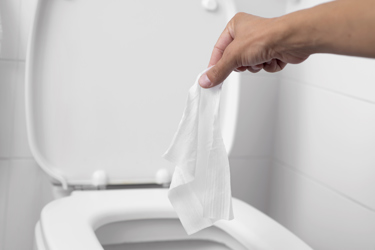Research: Non-Flushable Wipes Are Flooding Source Water With Microplastics


Though the public at large may continue to dispose of non-flushable wipes through their toilets, wastewater professionals are well aware of their propensity for clogging sewer systems and creating expensive issues. But even these professionals may not be aware of another water system problem that researchers are now tracing back to non-flushable wipes.
“Recent research in Ireland looking at commonly flushed personal care products (wet wipes and sanitary pads, specifically) reveals that many of them not only clog sewers, but are also adding to the ocean plastic crisis,” Treehugger reported. “The researchers … found that sediments near a wastewater treatment plant were regularly strewn with microplastic fibers consistent with those from consumer wet wipes and sanitary pads.”
At one site, the researchers found more than 6,000 white microplastic fibers per 2.2 pounds of sediment, along with used wipes and pads along the shore. The evidence suggests that wastewater treatment plants may be discharging microplastics into source water and surrounding environments as they process non-flushable wipes.
When non-flushable wipes, or wipes labeled as “flushable” despite the fact that they do not break down in wastewater, reach wastewater treatment systems, they often collect in large globules known as “fatbergs” and clog treatment equipment. As people around the world have increased their use of disinfecting wipes to combat the spread of the novel coronavirus, wastewater systems have seen an even larger surge of these materials in their systems.
The evidence that these wipes also pollute source water with microplastics adds yet another challenge in this unprecedented time.
“COVID-19 may have brought its own challenges for the oceans including the increased use of disinfecting wipes during the pandemic which potentially may end up as microplastic fibers in the sea,” the lead researcher from the study said, per Treehugger. “It is widely known that microplastics can act as vectors for contaminants including bacteria and viruses and are potentially harmful for public health and marine life.”
The scourge of non-flushable wipes and the presence of microplastics in source water represent two of the world’s most widespread wastewater and drinking water treatment concerns. And, unfortunately, it now appears the two issues are inherently linked.
To read more about the challenges posed by non-flushable wipes in wastewater systems, visit Water Online’s Flushables Solutions Center.